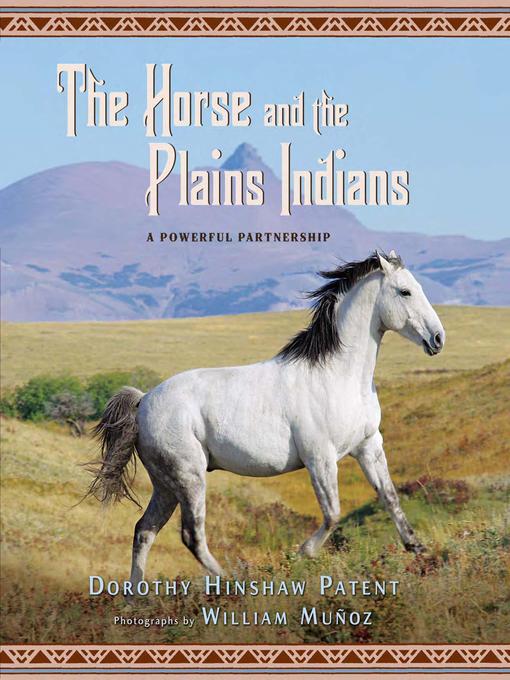
The Horse and the Plains Indians
A Powerful Partnership
فرمت کتاب
ebook
تاریخ انتشار
2012
Lexile Score
1200
Reading Level
6
ATOS
7.7
Interest Level
4-8(MG)
نویسنده
William Muñozناشر
HMH Booksشابک
9780547533070
کتاب های مرتبط
- اطلاعات
- نقد و بررسی
- دیدگاه کاربران
نقد و بررسی

June 15, 2012
In a follow-up to their acclaimed The Buffalo and the Indians (2006), Patent and Munoz discuss how the Plains Indians' relationship with horses enriched them. For a very long time, the Native American tribes living on the Western prairies relied on dogs pulling travois as their beasts of burden. They hunted buffalo on foot, a dangerous pursuit only possible when many people worked together. In the 16th century, Spanish explorers brought horses to the New World in order to dominate and frighten the Indians, but gradually, as the horses reproduced, escaped and spread, the Indians used horses to transform their world. Horses gave them power and freedom: They could carry much larger loads much faster than dogs. Better still, they could be used in battle. A single warrior on horseback could bring down a buffalo. A mounted raiding party could attack suddenly and retreat with equal swiftness. Horses transformed Indian art and spirituality as well, and, in fact, are still an important part of Plains Indian tribal culture. Patent's prose is, as always, clear and readable. Munoz's color photographs show the prairie and tribes as they exist today; in addition, the book uses black-and-white historic photographs that, while grainy, show the West the way it used to be. Very well done; an important resource. (Nonfiction. 8-12)
COPYRIGHT(2012) Kirkus Reviews, ALL RIGHTS RESERVED.

Starred review from May 1, 2012
Gr 4-8-In this companion to The Buffalo and the Indians (Clarion, 2006), Patent and Munoz show how the introduction of horses to North America transformed the lives of the Native American tribes living on or near the Great Plains. The book opens with a chapter on the "dog days" before horses, when Plains Indians used dogs for hunting buffalo and as pack animals. Subsequent chapters discuss how they "acquired" Spanish horses and rapidly developed an equine culture that revolutionized their buffalo-based existence and changed economic, social, and inter-tribal relationships throughout the region. Patent also examines how tribes incorporated the horse into their cultural and spiritual beliefs and rituals and warfare. She concludes with a discussion of how white expansion and confinement to reservations threatened the relationship between horses and Native people and describes the modern resurgence of Plains Indians horse culture, including tribal fairs and riding events that highlight their traditions and rituals. This book shares the same format as the previous title, and it features a well-written and readable narrative, appealing and informative full-color photographs, and reproductions of period illustrations. Although the two titles complement each other and give readers a comprehensive look at Plains Indian culture, this book can also stand alone and is certain to draw readers who are interested in Native American history or horses, making it a good choice for middle level collections.-Mary Mueller, formerly at Rolla Junior High School, MO
Copyright 2012 School Library Journal, LLC Used with permission.

August 1, 2012
Grades 5-8 In The Buffalo and the Indians: A Shared Destiny (2006), Patent and Munoz covered the special relationship between buffalo and Plains Indians. This time the frequent collaborators take on another aspect of the Plains Indian culture: how the introduction of horses radically changed the way of life for this group of Indians. Beginning with a brief glimpse into the existence of the Plains Indians prior to horses, referred to as the dog days, because they used dogs to transport their possessions, Patent then relates how horses came into their world via the Spanish conquistadors and how drastically it affected their livelihood, spirituality, and survival. Included is information about the U.S. government's attempt to manipulate Plains Indian societies by ruthlessly eradicating their horses. Modern-day celebrations of the horse by various tribes are effectively covered in the concluding chapter. This work is beautifully designed, with a pleasing balance of text in a large, clear font; ample illustrations consisting of paintings and both archival and recent photographs; and geometric designs used sparingly as accents.(Reprinted with permission of Booklist, copyright 2012, American Library Association.)

























دیدگاه کاربران